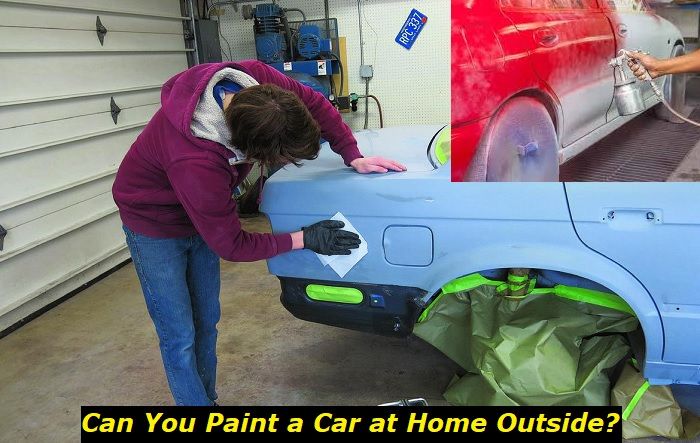Did you see a "Check Brake System" warning on your dashboard when you started your engine? Most people report seeing the error message when they start their cars in the morning. It may pop up throughout the day or stick to morning starts.
Check brake system message highlights
- Common reasons:ABS sensors, brake pedal sensor, low brake fluid, worn-out brake pads
- How to fix:read the codes, check the brake fluid, check the pads
- Possible consequences:you may lose brakes
- Priority level:High
- Can you drive?Not recommended
- DIY repair:Impossible
- Repair price range:$200-$750

So, what does the "Check Brake System" on Ford's dashboard mean? Why do drivers see that error? The article will discuss the "Check Brake System" error in detail.
What Causes the "Check Brake System" Warning?
When a part of your Ford is not functioning correctly, you'll see an alert on your dashboard. Therefore, a "Check Brake System" warning on your Ford's dashboard means your brake system and its components may be experiencing operational issues. It can also indicate that some other part of your vehicle is not functioning as expected.
Let's explore why the "Check Brake System" error popped up on the dashboard.
Reduced or Contaminated Brake Fluid
Your vehicle's brake system needs adequate uncontaminated brake fluid to operate. The brake fluid makes it possible to halt the car when necessary. The fluid delivers the power required to create brake force.
When you press the brake pedals, the brake fluid compresses the piston in your brake caliper. The compression amplifies the pressure in your brake lines, forcing the brake fluid to boost the pressure that rotates the rotors. The pressure will cause the rotors to push the brake pads into halting your vehicle.
Due to the heat generated each time you use the brakes on your vehicle, the brake fluid gradually vaporizes. Also, the pressure needed to push the brake pads causes gradual wear to the brake pads. Therefore, causing leaky brake lines. The leaks and vaporization, in turn, may gradually reduce the brake fluid level.
Apart from the vaporization and a leaky brake line, the fluid may come in contact with air. Hence, oxidizing and lowering the fluid's boiling point. The oxidation will cause moisture retention. The retention may cause the brake fluid to crystallize and cause internal rust.
The reduced brake fluid or contamination will cause an unresponsive or spongy brake pedal. Your rotors will not create enough friction needed to stop the wheels.
Worn-out or Damaged Brake Pedals
The brake pedal is a piece of metal close to every driver's heart. It can save or end your life. You don't want to have a faulty brake pad. Check your brake pads when you see the "Check Brake System" warning.
The brake pedals activate the braking action in your vehicle. When engaged, all the components in your car's brake work cooperatively to bring your vehicle to a stop. The leg press will apply close to 70 lbs of force to the brake pedal. However, your Ford may need up to 1,200 psi(pounds per square inch) to stop.
So, when you press the pedals, the components within the brake system amplify the force to produce the pressure your car needs to force a stop.
Handbrake
The handbrake or parking brake holds your car when you park it. The handbrake light will turn on when engaged and off once you release the handbrake. However, you may see the "Check Brake System" when the handbrake releases partially or fails to disengage.
When you disengage the handbrake, it should fully lower down. It may cause pressure on the handbrake if it's not lowered. Consequently, the pressure triggers the warning lights. Sometimes, the handbrake may fail to disengage.
Difference in Pressure
When you dissect your Ford brake system, you'll notice that it has two circuits. The circuits divide the brake system into two independent portions with separate circuit systems. Therefore, when a leak or damage occurs to one section of the brake system, the other half will keep your car in check. The functioning portion will allow braking action on some of the wheels.
Your vehicle's brake system also has a pressure differential switch that measures the difference in pressure in the two independent portions. So, you'll see a "Check Brake System" error when the switch reports a pressure difference.
Faulty ABS
Ford fits the ABS (Anti-lock Braking System) as a safety measure. It stops your vehicle from locking the front wheel in case of an emergency brake. It lets you maneuver the car out of danger instead of ramming into obstacles or skidding when making an emergency stop.
There is an ABS sensor on each wheel. It measures rotational speed, stability control, or traction. When you push the brake pedal during an emergency stop, the ABS sensor detects whether you have a locked wheel. Once it senses a locked wheel, the ABS sensor sends an alert to the ABS control module. The module will neutralize the locking by quickly increasing and reducing pressure which turns on and off the brakes a few times within a second, resulting in pulsating brakes. The pulsing brakes will cause the wheel to turn as it slows down, letting you steer your wheels away from any obstacles as your car slows.
Therefore, your car needs a working ABS. Once the automobile notices a faulty ABS, it will alert you through a "Check Brake System" error message.
Battery Problems
A low voltage may cause the "Check Brake System" error. Generally, the battery won't affect your brake system. But an issue with your battery can set off the "Check Brake System" error message. Your battery needs to supply enough voltage to your car's electrical system. A low voltage can cause problems that may affect the brake system.
The low voltage may lead to unresponsive ABS sensors. The ABS relies on electrical power to function. When the ABS sensors are unresponsive, the select diagnostic check may send you a warning via a "Check Brake System" error warning.
Checks to Perform When You See the "Check Brake System" Error
Several issues on your brake system can trigger the "Check Brake System" error. Therefore, you'll need a comprehensive brake system check to uncover what may be causing the error message on your dashboard.
Examine the Brake Pedal
When assessing the brake pedal, check the following.
- Height
There should be enough height to initiate a brake. The proper height ensures that the foot-press force travels throughout the pedal evenly. Measure it from the floor of your car to the pedal.
- Free Play
Free play is the distance the pedal has to cover before the master cylinder piston begins to move. Lightly press the hand on your pedal until you feel some resistance to measure the free play.
- Reserve Height
Reserve height is the distance between the maximum pressed pedal and the floor. You need reserved height if there is air in the brake system or if a leak occurs. It will give the pedal the required distance to initiate the brake despite the leaks or presence of air. Engage the parking brake, start your engine, and put your foot on the pedal. Press it to the end. Measure the height between the pedal and the floor.
Also, check whether the pedal is firm when you apply force on it or sinks to the floor. The brake pad could be defective or worn out if it sinks. Don't forget to check the amount of force you need to apply on your pedals before your car breaks.
When you notice anything unusual with your brake pedals, schedule a brake pedal maintenance with your mechanic.
Check and Refill the Brake Fluid
Open your vehicle's hood and assess the brake fluid level. Do this when the engine is cold and on flat ground. Find the master cylinder reservoir and clean it. Ensure there is no dirt on the cap before opening it. Check the oil level. It should be above the "MIN" level. Add more fluid if it's below the "MIN" level. However, stick to just below the "MAX" level.
Check for Leaks
Leaks cause the differential pressure switch to record a difference in pressure in your brake system. Inspect the lines and wheel cylinders. Also, check whether the master cylinder has any leaking spots and ensure the cap is tight. A damp or darkened region around one of the brake components indicates a leak in your brake system. You can also smell the fluid areas to verify whether it's brake fluid.
Replace or rebuild any line or cylinders with a leaking point.
Assess the Handbrake
Engage the handbrake and check whether it's too tight or too loose. Also, do a hill test. Park your car on a slope using the parking brake. If the car stays put, it means the handbrake is okay. You may need to repair or replace the handbrake if it starts rolling.
Diagnose the ABS System
Check the ABS fuse before touching any ABS component. If it is working as expected, assess the sensors. You can also utilize a scan tool. The codes will tell you if there is an operational issue with your ABS. In case the ABS is defective, take your car to your mechanic.
Assess Voltage on Your Cars Battery
Hook a voltmeter to your battery. If it's in working condition, you should see a voltage of 12.4v to 12.6v. You may need to recharge if it's below 12.4v. Slow charge the battery if it's below 12.2v. You can also perform a load test.
Final Thoughts
Your brake system is vital for your safety, your vehicle's safety, and the safety of other road users. Therefore, don't take the "Check Brake System" error message lightly. Take your car to your mechanic for a proper diagnosis to keep it in its running order. It doesn't matter if it is a minor brake issue or a light check on your dashboard.
About the authors
The CarAraC research team is composed of seasoned auto mechanics and automotive industry professionals, including individuals with advanced degrees and certifications in their field. Our team members boast prestigious credentials, reflecting their extensive knowledge and skills. These qualifications include: IMI: Institute of the Motor Industry, ASE-Certified Master Automobile Technicians; Coventry University, Graduate of MA in Automotive Journalism; Politecnico di Torino, Italy, MS Automotive Engineering; Ss. Cyril and Methodius University in Skopje, Mechanical University in Skopje; TOC Automotive College; DHA Suffa University, Department of Mechanical Engineering






Add comment